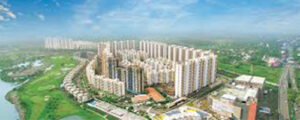Nearly 60 million people in urban areas lack access to improved sanitation arrangements, and more than two-thirds of wastewater is let out untreated into the environment, polluting land and water bodies.

Over the period of past decade, the pace of urbanisation has picked up steadily. Currently, more than half of the world’s population of 3.9 billion people, or nearly 54 per cent, live in towns, cities and mega- cities. This number is expected to grow to two-thirds by 2050. India is a part of this global trend towards increasing urbanisation in which more than half of world’s population is living in cities towns.
India’s Changing Urban landscape
If we look at the last census data it is first time in the history of Indian census that the rate of Urban population growth has outpaced the growth of rural population. Indian population has In India out of the total population of 1210. 2 million as on 1st March, 2011, about 377.1 million are in urban areas. The net addition of population in urban areas over the last decade is 91.0 million. 31.16 per cent of India’s population 377 million live in urban areas as per 2011 Census. For the first time since Independence, the absolute increase in population is more in urban areas that in rural areas.

The provisional results of Census 2011 reveals that there is an increase of 2774 towns comprising 242 Statutory and 2532 Census towns over the decade. Growth rate of population in urban areas was 31.8%. Further the number of million plus cities/urban agglomeration UA has increased from 35 in Census 2001 to 53 in Census 2011.
As urbanisation is a must for economic growth, the rate of people’s migration to cities is now happening at a breakneck speed, in the process putting enormous pressure on the ability of cities to provide adequate infrastructure to support the burgeoning population. and also brings a new set of challenges.
Urban Sanitation Scenario
According to estimates released by UN Habitat, ‘more than one-third of the developing world’s urban population of over 863 million people lives in slums. As city infrastructure starts to crumble under pressure, availability of adequate sanitation facilities becomes the first casualty’. Due to an acute shortage of adequate toilets, nearly 100 million people globally are being left with no other option but to practice open defecation.
The remaining 600 million people rely on toilets that do not fulfill minimum requirements of hygiene, safety or privacy — including dirty and crowded communal toilets. In fact, it is estimated that almost one-fifth of all urbanites — that is nearly 700 million people — live without a decent toilet. To put that into perspective, the queue for people waiting for toilets globally would stretch around the world 29 times! These severely compromised sanitary conditions are not only damaging the environment but also posing a real-time health risk to the people in the form of communicable diseases, such as cholera and more.
A recent report by Water Aid —The State of World’s Toilets 2016, put India at the number one position for having the largest number of urbanites living without sanitation. Close on the heels of India is China. The instance of huge populations migrating constantly to urban areas that are most ill equipped to handle the rush, is exceedingly resulting in an ever-increasing gap between economic development and urban planning for both the countries.

One of the major challenges for the Government is to elevate India to the international levels of urban sanitation that is found in developed countries. As a step towards this, India along with other member states of the UN committed to the new Global Goals for Sustainable Development, which included in Goal 6, a target to ensure everyone, everywhere, has access to basic toilets by 2030. But for this to be achieved, India must first concentrate on establishing the infrastructure needed to set up the required number of toilet facilities, refurbish and build efficient sewage networks. It must also ramp up the waste treatment facilities so that water bodies are not polluted by effluent discharge. The attempt in this direction started way back in 1996.
The late Surge
In August, 1996, the Central Government guidelines entitled ‘Urban Development Plans Formulation Implementation UDPFI’ were circulated to all State Governments for adoption. These guidelines, apart from other issues, suggest innovative approaches for fiscal resource mobilisation. In the backdrop of the New Economic Policy in the nineteen nineties, it was suggested that the traditional system of funding based on Plan budgetary allocations be reduced ultimately withdrawn due to fiscal deficit. Subsidies need to be rationalised urban development plans projects need to be placed on a commercial format by designing commercially viable urban infrastructure services area development projects. This was sought to be achieved by restoring a proper match between functions source of revenue by giving additional tax measures. Other innovative resource mobilisation measures include using l as resource; increase in the non-property taxes using Public-Private Partnership in service delivery.
According to the High Powered Expert Committee HPEC appointed by the Ministry of Urban Development, which gave its recommendations to the Government in the year 2011, there is a requirement of investment in urban infrastructure to the tune of ₹ 39 Billion ₹ 39.2 lakh crore at 2009-2010 prices over the next 20 years.
As per estimates of the HPEC, water, sewerage, solid waste management , storm water drains etc. would require another 20 per cent of investment. Among others, urban renewal including redevelopment of slums would require 10.5 per cent of investment and capacity building for better urban governance 2.5 per cent of investment. But a real attempt towards this only started with the launch of Jawahar Lal Nehru Urban Renewal Mission(JNNURM) in 2005.
In all these years urban sanitation has never enjoyed the kind of attention it has deserved. An intense engagement with the urban sanitation on the governmental level has been missing unlike rural sanitation which has seen continuous attempt made in that direction for the last thirty years or more. A concerted effort towards development of Urban infrastructure, including sanitation, was witnessed when government of India launched Jawahar Lal Nehru Urban Renewal Mission(JNNURM). With this launch urban sanitation first time received the attention it deserved. In the next five years the allocation of budget for urban sanitation witnessed a steep increase. In its first five years the investment in sanitation was almost equal to half the amount which was invested in the first 55 years of independence. Although it was better late than never but by that time the required quantum of investment has risen multi fold. When the JNNURM was launched, in 2005, according to one of the estimates, Urban sanitation required anything between US $ 40,000 million to US $ 58,000 million which was anything between 10 to 15 times of what was allocated for urban sanitation, a mere US $3,800 million. By now the need of investment in this sector would have risen in a substantial way. This requires immediate relooking at the financial need and ensure that it is being provided in an optimum way. But all these would come to naught if the population of the urban centre, particularly metropolis, are not controlled.
Considering the huge estimated requirement of investment, sums of these magnitudes cannot be located only from within the budgetary resources of Central, State and Local Governments. A compulsion has, therefore, arisen to access financial resources from the market, and induces the private sector to participate in urban development programmes as a policy.
But it is easier said than done. The experiment of PPP in India has not witnessed very encouraging results. Indian highways are a very good example of how things may go wrong in this modal. But looking at the enormity of the problem we need to be doubly sure that this partnership should operate smoothly. Private partnership in public infrastructure is challenging to say the least. The Progress of smart city is also not very encouraging. To pull up the laggard’s government has come up with the idea of dovetailing of worst performing cities with best performing cities. For example Varanasi has been paired with another holy city Amritsar. Now, Varanasi will help Amritsar to improve its performance under the smart cities mission.
Similarly, Surat and Visakhapatnam will help Saharanpur and Diu to improve their performance respectively. What is required to come up with the model which is deliverable as well as sustainable. In PPP models we, more often than not, set unachievable targets which creates myriads of problem in future. We need to carry out due diligence in a very intense and transparent manner so that all the parties involved in the exercise that what they are getting in to. But this entire model would need to be put together with an urban housing scheme. These severely compromised sanitary conditions are not only damaging the environment but also posing a real-time health risk to the people in the form of communicable diseases, such as cholera and more.
Urban housing a must

In India, the 2012 report of the Technical Group on Urban Housing Shortage for the 12th Plan (TG-12)—set up by the Ministry of Housing and Urban Poverty Alleviation to estimate the urban housing shortage in the country for 2012-2017—pegged the total number of households without “decent” housing in cities at 18.78 million. This number reflects an aggregate of those who live in non-livable, temporary, overcrowded and dilapidated homes: those who live in unacceptable conditions as well as those who are homeless. This, therefore, is the face of “housing poverty” in urban India. In urban scenario adequate housing is one of the perquisites for urban sanitation. Any amount of attempt towards sanitation would not be successful till each family has not been provided with dignified housing and provide freedom from urban squalor.


3 comments
I really dont know about this. I dont know My spouse and I believe your thoughts, but I am going to merely agree to disagree. Thanks for the article though. – Drop me a visit at my replica watch store sometime!
These kind of post are always inspiring and I prefer to check out quality content so I happy to discover many first-class point here in the post, writing is simply huge, thank you for the post
Thank you so much for inspiring and motivational words!